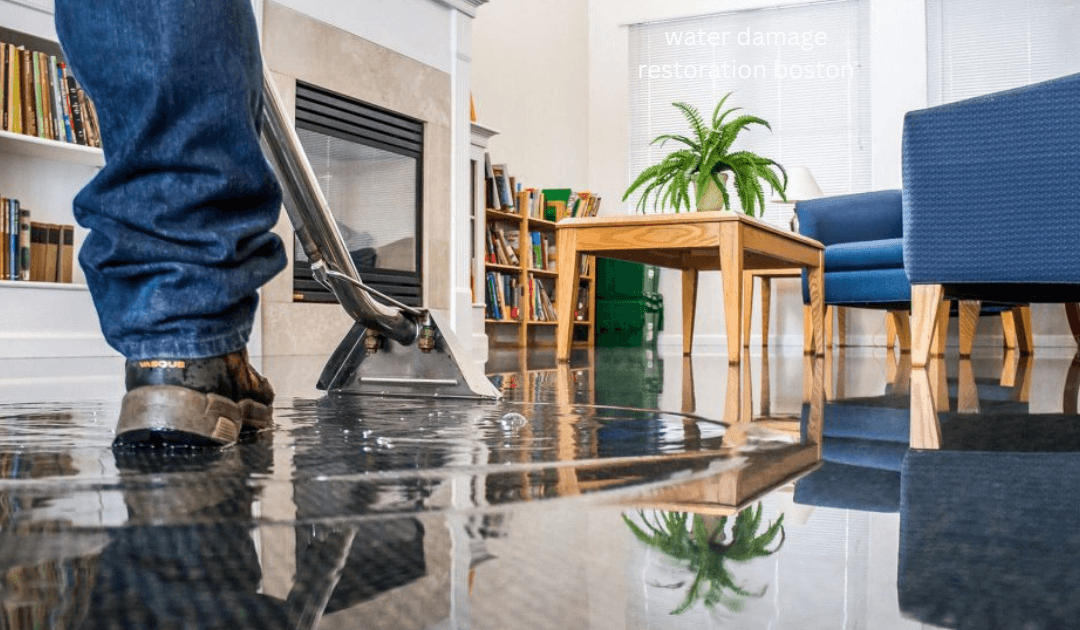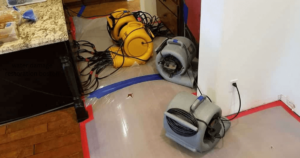How To Restoration Professionals Handle Water Damage: Water damage is unpredictable. Whether it’s due to natural disasters like hurricanes and floods or internal issues like burst pipes and sewer backups, the aftermath can be daunting. The key to successful restoration is understanding the damage and its implications.
Professional restoration experts follow a systematic approach to address water damage, from initial assessment to cleanup and final approval, ensuring homes and offices are safe, dry, and mold-free.
Understanding the Effects of Water Damage:
Water damage refers to the variety of problems caused by water intruding, where it can attack a material or system through destructive processes. From rusting of steel and rotting of wood to microbial growth, the harm to properties and human health can be vast.
Why Professional Water Damage Restoration is Essential:
Many homeowners might be tempted to handle water damage themselves. While minor leaks can often be fixed without professional help, more extensive damage poses risks. An improperly cleaned area can lead to mold growth, which can further damage the property and pose health risks. With advancements in eco-friendly methods, professionals have adopted safer, greener solutions that protect both the environment and your home.
Step-by-Step Water Damage Restoration Process:
Damage Assessment:
Every professional intervention starts with an assessment. Restoration experts will arrive on site, ask relevant questions about the incident, and conduct a thorough inspection. This helps determine the kind and category of water damage and guides the subsequent steps.
Water Removal and Extraction:
Time is of the essence. With specialized equipment like powerful vacuums and pumping systems, professionals can extract standing water swiftly. Ensuring no stagnant water remains is crucial to avoid further damage.
Clean-Up, Sanitizing, and Odor Removal:
After the extraction, the cleaning process begins. Given the potential threat of mold and fungi, professionals use disinfectants and antimicrobial solutions. They ensure every corner, nook, and cranny is sanitized. Modern-day cleaners also provide the space with a fresh smell, removing the damp, musty odor associated with water damage.
Dehumidifying and Drying:
Water can seep into walls, floors, and furnishings. Professionals use advanced drying methods, including air movers and dehumidifiers, to ensure every inch of your property is moisture-free.
Cleanup and Approval:
Restoration doesn’t end with drying. There’s a need to ensure the affected area is restored to its original or even better state. Licensed contractors will often work alongside water damage professionals to guarantee top-notch restoration. The methodologies and technologies have only improved, ensuring your space is in safe hands.
Pitfalls of DIY Water Damage Restoration:
While DIY has its merits, water damage is usually not one of them. A slight oversight can lead to mold growth, structural damage, or even electric hazards. Professionals are trained to spot potential threats and mitigate them effectively.
Conclusion:
Handling water damage requires expertise and precision. While DIY methods might seem tempting and cost-effective initially, the risks involved are high. With the advancements in eco-friendly restoration techniques, professional intervention not only guarantees thorough work but also ensures a safe and green recovery process.
FAQ Section of How To Restoration Professionals Handle Water Damage
How do professionals determine the extent of water damage?
Professionals conduct a thorough on-site assessment, examining every corner of the property, from rooms to basements. This comprehensive check allows them to analyze the severity and categorize the damage appropriately.
Can water damage be fixed in a house?
Yes, water damage can generally be repaired, though its extent determines the feasibility. As expert Shawn Laib from Quote.com highlighted, damage can be fixed unless it has impacted every room in the house.
How long does it typically take for water to damage a foundation?
The time it takes for water to damage a foundation varies based on factors like water exposure duration, foundation material, and drainage efficiency. However, prolonged exposure can weaken the foundation over time.
How do they check for water damage in walls?
Experts use moisture meters to detect hidden dampness within walls. This equipment helps identify moisture levels without causing damage to the wall, ensuring the integrity of the structure is maintained.
Is mold growth after water damage a common concern?
Yes, mold growth is a significant concern after water damage. If water isn’t cleared promptly, usually within 24 to 48 hours, it can facilitate mold growth, posing health risks and further property damage.


